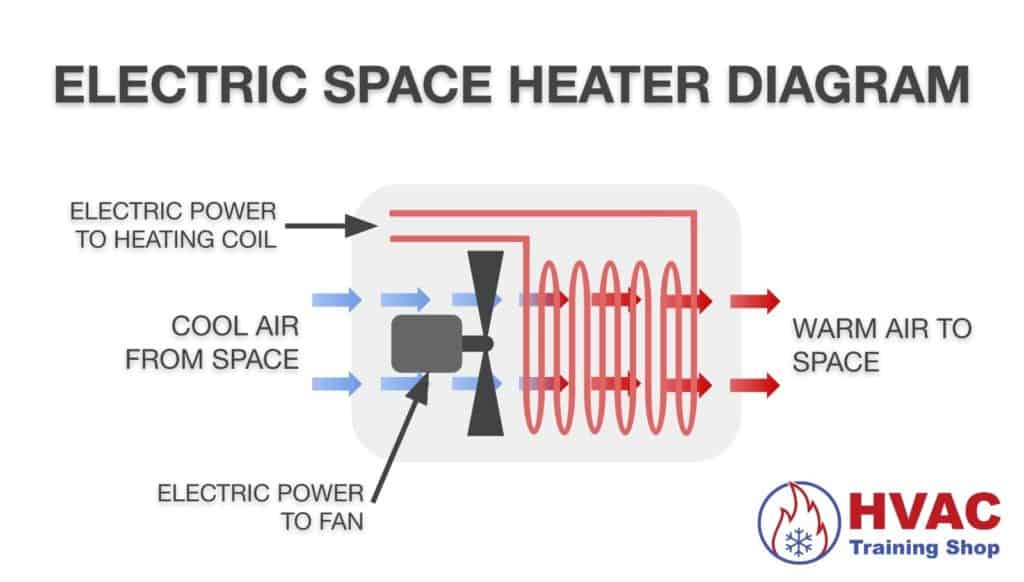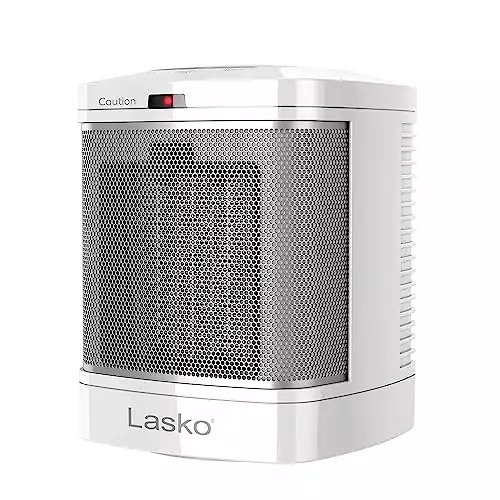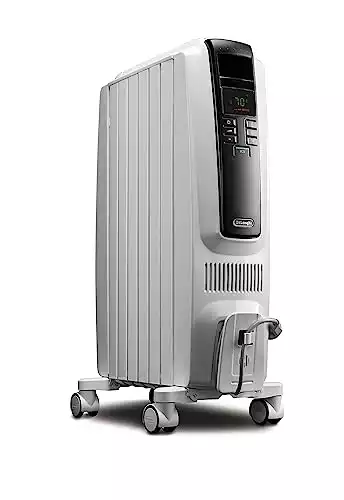Are you having trouble keeping a room in your home warm?
Or maybe you spend most of your time in one room, but don’t want to heat your entire home?
Using an electric space heater is the perfect solution for both of these things (plus a lot more!).
When it comes to electric space heaters, there are two common types: Ceramic and Oil-Filled.
In this article, I’ll cover the pros and cons of ceramic and oil-filled space heaters. I’ll also cover how they each work, so you’ll be able to know what’s best for your situation.
Ceramic versus oil-filled space heaters
Ceramic and oil-filled space heaters both create warmth by using electricity to generate a current that flows through a coil inside the unit.
The electrical current causes the coil to heat up. But that’s where their similarities end.
Below I’ll go over the pros and cons of each.
Ceramic space heater pros
- Instant heating. Ceramic space heaters start heating up an area near instantaneously—right when you turn it on! You’ll feel the heat right away.
- Safer to touch. The case around most ceramic space heaters doesn’t get too hot—so there’s less of a chance that you’ll get burned.
- Easy to move; portable. Most ceramic space heaters are small. Easy to pick up and move with one hand.
- Targeted spot heating. If you need to heat a specific area, you can aim a ceramic space heater and direct the heat exactly where you want it.
Ceramic space heater cons
- Noisy. The fan on a ceramic space heater generates a decent amount of noise. Some people have trouble sleeping with one in the same room.
- Requires regular cleaning. Because of the air being blown around, ceramic space heaters gather dust and require cleaning.
- Trouble maintaining a stable temperature. As a ceramic space heater cycles on and off, there will be temperature fluctuations in the room that it is heating.
- Blows dust around. Since ceramic space heaters use a fan, then it will blow any dust and allergens around the room as well.
Oil-filled space heater pros
- Near-silent. Oil heaters don’t have a fan, so they don’t make much noise. (However, there may be some soft cracking noises when turning an oil heater on; this is normal)
- Able to maintain a stable temperature. Oil-filled heaters have a high thermal mass—so they continue to heat a space even while off.
- No dust blowing around. Without any fan, there is no dust blowing around when using an oil-filled heater.
Oil-filled space heater cons
- Takes a while to start heating. Because of its high thermal mass, an oil-filled heater takes a while to get hot when you first turn it on. (But after it gets hot, it stays hot for a while).
- Large in size. Oil-filled heaters are generally much larger than ceramic heaters. For this reason, they usually have wheels so you can move them from room to room.
- Hot to the touch. The surface of an oil-filled heater gets extremely hot—so you need to keep it away from children and pets.
How do ceramic space heaters work?

Ceramic space heaters heat a space with a ceramic coil. As electricity flows through the ceramic heating element, it heats up.
The unit draws in cool air through a vent with a fan and blows it across the heating element.
The fan is used to circulate air through the heater and out into the room that it’s heating.
Since ceramic space heaters have a fan, they are more suitable for heating a large space when compared to oil-filled heaters. However, ceramic space heaters are still not very great at heating a large space since they are limited by the amount of electricity that they can draw from your wall outlet.
This Lasko Ceramic Space Heater has an ALCI safety plug- so its safe to use in wet areas such as bathrooms.
How do oil-filled space heaters work?

Oil-filled space heaters work in a similar manner as ceramic space heaters—with a few differences.
While both have a ceramic heating coil, the oil-filled heater heats a reservoir of oil. This is in contrast to the ceramic space heater, which directly heats the air with its heating coil.
As the oil heats up, it transfers its heat to the metal fins that extend vertically along the heater. These metal fins heat the surrounding air by convection.
This De'Longhi Oil-Filled Space Heater has a 24-hour timer that's perfect for a "set-and-forget" schedule. It also has an anti-freeze setting so you can use it in your basement to help protect against frozen pipes.
The oil reservoir stays warm, even long after the oil heater shuts off. For this reason, oil-filled heaters are much better at maintaining a stable temperature inside of a space.
At the end of the day, both ceramic space heaters and oil-filled space heaters put out the same amount of heat—it’s just a matter of how you want that heat delivered to your space.
Is a ceramic or oil-filled space heater more energy efficient?
The short answer: Ceramic and oil-filled electric space heaters have nearly the same energy efficiency.
Since they both use electric resistance heaters, they are 100% efficient in converting electricity to heat.
It should be noted that a ceramic space heater uses a fan to circulate air through a room. The electricity used to power the fan is not used to heat the room.
So if you want to get really technical, the ceramic space heater is slightly less efficient than the oil-filled space heater. But the fan electricity usage is negligible when compared to the heating element and should not be a factor in your decision.





